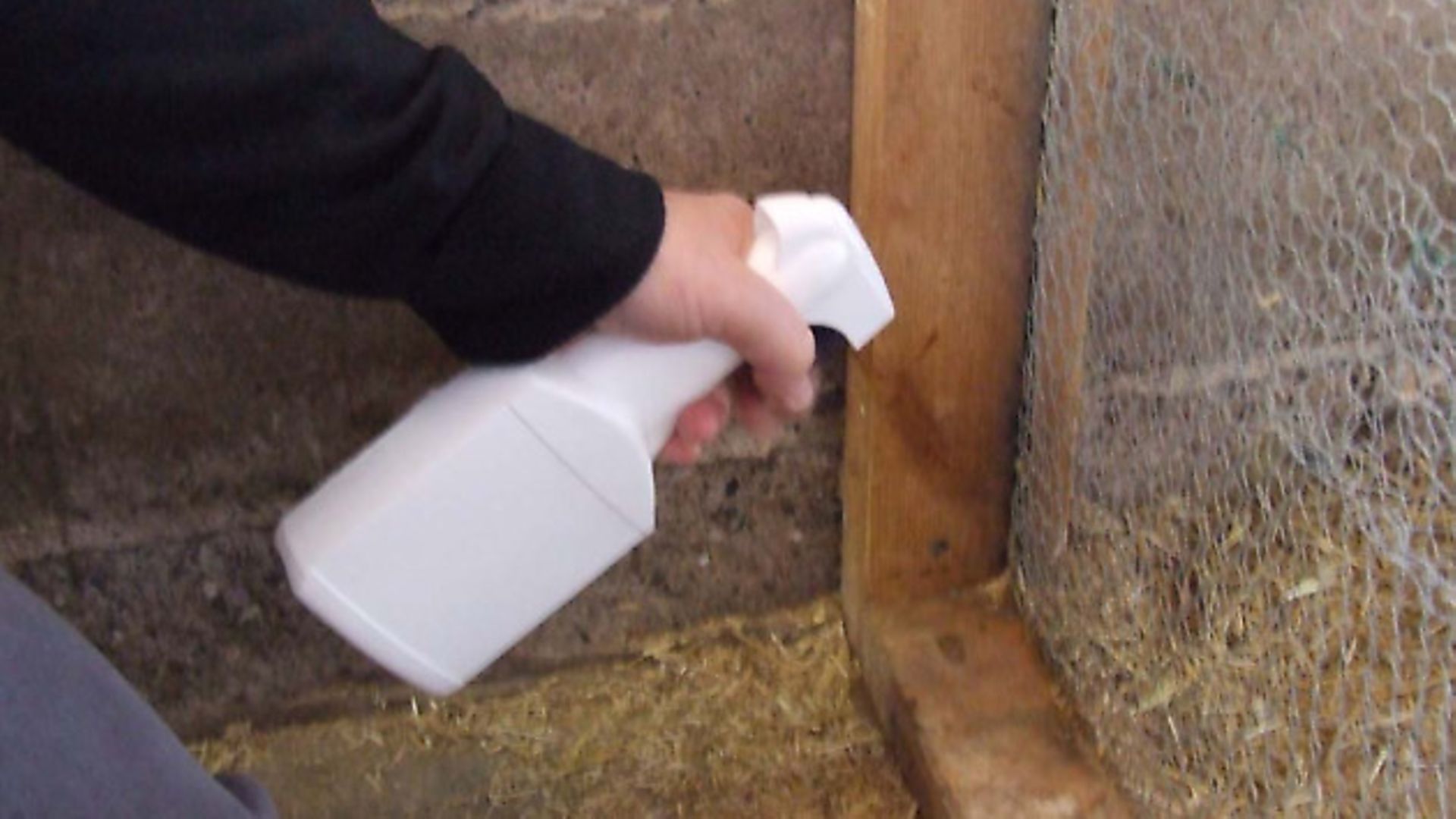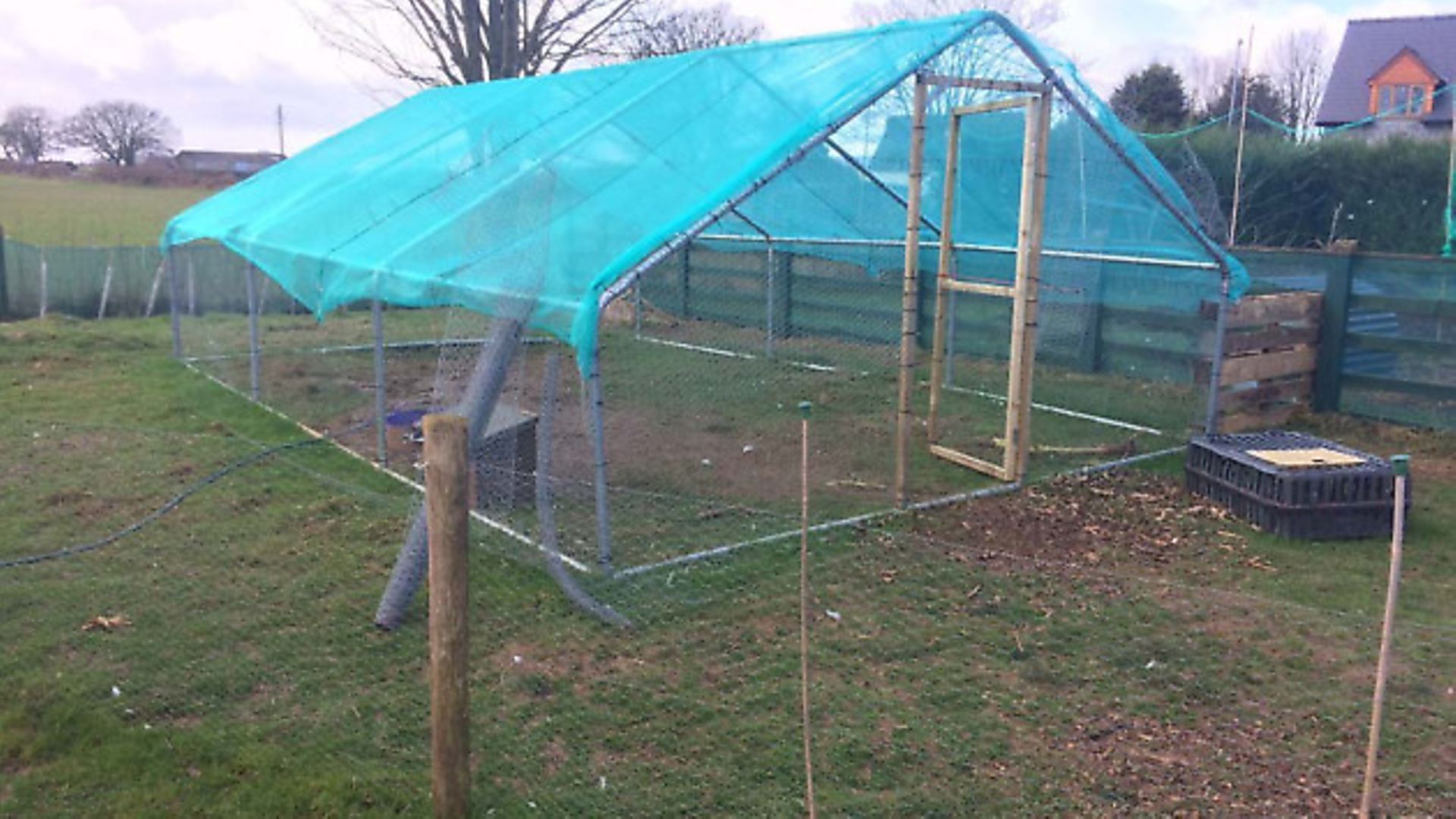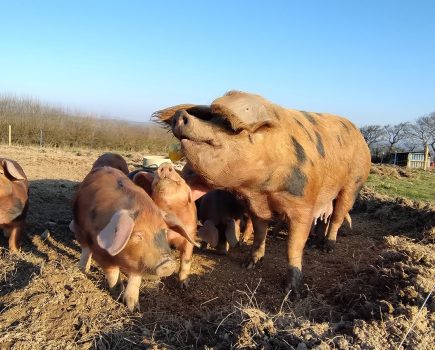The latest situation, a summary of biosecurity advice by our writer Kim Stoddart, and a case study

Most poultry keepers in Britain can now let their birds outside while still adopting strict biosecurity measures.
Since December 6, all UK poultry keepers were required to keep their birds housed or under cover to help prevent them coming into contact with wild birds which have been carrying a virulent strain of bird flu.
Although there have been a number of outbreaks of bird flu across the country, the measures were eased in many parts of England, and also in all of Scotland and Wales, from February 28. All poultry keepers were required ‘to carry out a self-assessment of enhanced biosecurity measures’, but with the containment requirement being more relaxed.
The strictest measures were still due to be in force in many ‘high risk’ areas of England. Poultry keepers in these areas were still being told to keep their birds housed, or at least under netting, until at least the end of April.
The high risk areas were shown on a map on the DEFRA website: https://www.gov.uk/guidance/avian-influenza-bird-flu Many were in coastal areas or near standing water where wild birds were likely to gather.
The continued imposition of the strictest measures in these areas was causing consternation, particularly among free range egg producers fearful of having their eggs downgraded.
Meanwhile, poultry keepers, including smallholders and back garden henkeepers outside of the high risk areas, and in Scotland and Wales, were welcoming the opportunity to at least give their birds a measure of freedom. They had to keep their birds contained in coops, barns, sheds, garages and even polytunnels for many weeks.

Biosecurity: what exactly do we need to be doing right now? Kim Stoddart, a smallholder in Wales, has been finding out
Like a lot of poultry keepers, biosecurity is something that is entirely new to me. As a mainly visual learner (better at doing and not great at reading instructions), I had to go and see first-hand what measures others were implementing before I could imagine what steps could be taken on my own smallholding in December and what to do now, to enable my poultry to have some outside access.
The upshot of the current biosecurity measures is that unless you live in one of the areas of England deemed to be higher risk, you do have the option to let your birds out as long as you follow disease prevention guidelines. In Wales you have to complete a self-assessment form to show how you are doing this (see the panel on Wales for more information here).
Ultimately, a lot of poultry pundits are suggesting that biosecurity of this kind is likely to be a regular occurrence at this time of year around wild bird migration and the risk of bird flu infection associated with this. So realistically, these are measures that need to be weaved into our smallholding practices for the foreseeable future with covered runs and houses available should a lockdown arise each year.
Right now however, here are just some of the ways to go about allowing your birds to free range safely (if you live outside the higher risk zones) :
Keeping poultry separated
-Perhaps the hardest part for me is that chickens and turkeys need to be kept separate from ducks and geese now. We are managing this by allowing our ducks access to another enclosure, whilst our chickens are able to free range in a contained part of the garden, both of which can be regularly checked.
How to keep wild birds away
Defra suggests the use of a scarecrow or visual bird-scarers (which could be shiny objects such as CDs or strips of foil that reflect the light and can act as a deterrent for example). Likewise any free standing water sources should be removed or covered and placed elsewhere as these can also draw in wild waterfowl.
Personally, as someone who normally actively encourages wild birds onto her smallholding, I have been making other areas of my plot (far, far away from the poultry) much more appealing instead for garden birds to draw them here instead, for example by hanging up bird feeders and putting out water elsewhere.
Water and food – keep it under cover/in their house
As above, making sure there’s no spilt chicken food or wild bird access to poultry water.
Additional British Hen Welfare Trust tips (www.bhwt.org.uk)
Maintaining good biosecurity when hens are free ranging might sound like an arduous task, but there are simple steps you can take to ensure your girls are happy and healthy while the bird flu threat remains present.
•Prevent wild birds and vermin stealing poultry food – keep feed and water inside your hen house where possible to discourage wild birds. If you must feed outside, ration quantities to ensure feed is eaten quickly and clean up any spillages regularly.
•Take extra steps to keep your coop clean by disinfecting the hen house on a regular basis – Chicken Vet Dri-Bed is a super-absorbent, deodorising powder with enhanced disinfectant properties.
•If you are able to, create a boot dip by your hen coop, it is worth disinfecting your footwear before and after entering. A simple bucket, with lid (to prevent rain dilution) will suffice. Virkon S is a Defra-approved disinfectant and will eradicate viruses and bacteria from your hen house and run.
•Agrisec 250 Plus can be used to disinfect the ground around your hens’ coop. It contains the DEFRA-approved disinfectant Halamid which is tested and approved for the control of avian flu.
General good husbandry is also essential and is something hen keepers should be doing on a daily basis. Here’s a reminder of some of the basics to consider.
•Daily coop clean – Don some rubber gloves and pick up droppings and patches of wet bedding on a daily basis.
•Weekly coop clean – A thorough clean should be undertaken weekly, including sweeping out bedding, and using a paint scraper to remove floor debris. A fresh layer of bedding such as Dengie Fresh Bed will make your coop cosy again.
•Good hygiene – Make sure your coop is cleaned and disinfected on a regular basis with a product such as Bio VX or Poultry Shield; this can be used monthly.
The Soil Association also added:
“Keep contact with wild birds to a minimum, make the range as unattractive to wild birds as possible, net wet/pond areas, keep visitors to a minimum, feeders and drinkers indoors, clean people, clothes and vehicles after and before contact, disinfect houses between batches and areas around, isolate new flocks, consult vet, keep vermin control up, thorough record keeping, check on flocks regularly, don’t mix flocks or let domestic or wild animals into the houses.”
FOCUS ON WALES
I’d been counting down the days to the February 28 when I hoped I could let my chickens and ducks out to free range again. It was only the day before that I learnt on social media that in Wales (where I live) that the prevention zone for bird flu (aka avian influenza) had been extended until the end of April.
After initial confusion and frustration as to how exactly I was supposed to ‘police my borders’ for wild birds, it became clear upon delving in detail, that actually the requirements aren’t that dissimilar to those for the rest of the UK. You can let your birds out to free range as long as you prove by way of the self- assessment form (which needs to be competed and kept) that you are doing everything you can to follow bio-security to the best of your ability.
Once you understand the issue – it’s actually a useful form to work to as it takes you through the different areas and makes you think about anything else you could be doing. I’d actually now recommend it as a useful resource for smallholders outside of Wales.
Here is an exchange I had with the Welsh Assembly:
Q: “In practical terms, how can a backyard poultry keeper/ smallholder let their chickens free range in their garden/field safely? If they keep the water and food safe from wild birds, cover any ponds with netting or fence off areas to prevent their birds accessing ponds etc that cannot be covered, use approved disinfectant and show they are doing the best they can to keep wild birds away from a space that the poultry are ranging in, is this okay?”
A: “Yes!”
Q: “How do you police this (the wild birds)? Does this mean that if you check on the area regularly that’s okay? A lot of smallholders are out and about on their land, so that’s realistic. Also, it helps if you can see the area from your home. What is expected with regards to the policing?”
A: “Yes. There have been instances of members of the public reporting breaches of the rules to LAs, which have been investigated by them. Also, keepers must complete the self-assessment form setting out how they have complied with the rule. They must complete this if they are inspected by the LA or Animal and Plant Health Agency (e.g. if they need to report suspect disease).
“The key components of this is that keepers complete the Avian Influenza Prevention Zone self-assessment form as this will ensure that keepers consider and address the required measures. It is recommended that keepers discuss their circumstances with their private veterinarian who will be able to offer advice, guidance and support.
“Upon an inspection by APHA or relevant Local Authority, keepers should present them with their completed self-assessment form. The inspector will then work with the keeper to ensure that they are compliant with the required measures. Inspections can be ad-hoc or in response to a reported issue.”
A case study
By Liz Zorab, a smallholder from Monmouthshire in Wales
We have restricted access to our property so that the only vehicles that enter our own or essential vehicles (like when we had to have oil delivered as we had run out).
We have a different set of clothes and footwear for use outside elsewhere on the smallholding which we never wear to go into the poultry field or housing.
At the entrance to the birds’ indoor accommodation we have a foot dip bucket and hand disinfectant rub which we use every single time we go in and hand rub on the way out again.
No one else is permitted access to the bird housing.
Food is in hanging containers which are up off the floor (vermin proof) and have solid lids (poop proof). They are very simple to make. Here’s my vlog about making the feeder. https://www.youtube.com/watch?v=0qCDBJInfYs&list=PLa6906pLM92n9bLKWNiDeLVd3nGCRDH1W&index=13
We use an electric rat zapper after the birds have gone to bed at night (in a converted garden shed).
I have now bought some water nipples and will make a hanging water dispenser, similar to the feed buckets. The buckets can either be bought or if you ask at a local cafe, they may have empty jam or spread buckets that are perfect for the job.
I can see the most of the chicken field from the house and, as a smallholder, I am back and forth to the chicken field several times a day to collect eggs, talk to the birds, see how they are getting on etc. When I’m working in the vegetable garden or food forest, I can see the birds and keep an eye on them. I walk the field every day to check the fencing, hedges etc. and that no debris has blown onto the land overnight, so at that point I can check for any signs of contamination.
We have used debris netting to cover walkways, runs, pens and even the open sides of the stable; it’s cheap and effective, it stops poop going through to the ground but so far hasn’t ripped off the frame in the winds and storms. I bought 3m x 20m of debris netting for £10 including postage (and a free small tarp!) from eBay. It can be joined to make 6m, 9m or wider widths using cable ties, string or baling twine. It does need to go over something like chicken wire, but it’s been a real boon to making the areas safe for the birds.
We have no hard pathways in the chicken fields so don’t need to disinfect any hard surfaces there.
We are working on the basis that the lockdown may become a regular thing and so are planning for long-term solutions. I guess we now have nine months until the next complete lockdown starts and, for 2017, I want to be ready and not go through the mad panic and scramble that the ‘get them inside now’ caused this year.” “ www.holdingon4.blogspot.co.uk
Image(s) provided by:
Archant







